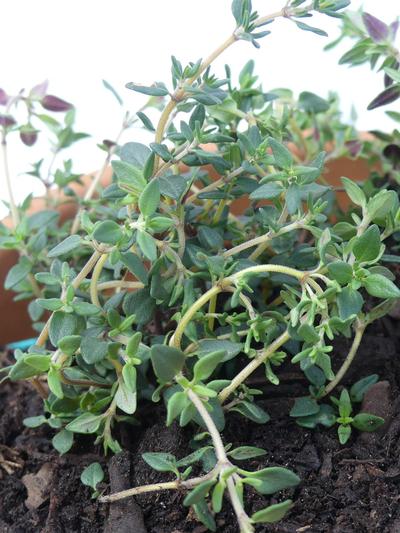
Planting Vessel
Choosing the right pot is crucial for windowsill gardening. We recommend the Elho Green Basic Trough for a compact yet effective solution. These mini troughs are ideal for windowsills, measuring 29.6 cm long, 11 cm high, and 11.5 cm deep. They’re made from recycled plastic in Amsterdam and are powered by Ehlo’s own wind turbines, making them an eco-friendly option. The troughs come with an integrated saucer, allowing you to water both from the top and base through a convenient opening, ensuring your plants stay hydrated without excess water pooling at the bottom.
Herb and Microgreen Selection
Here are some great options for your windowsill garden, whether you're planting from pots or seeds:
Potted Herbs:
- Parsley
- Mint
- Chives
- Rosemary
- Thyme
From Seed:
- Basil
- Cress
- Mustard
- Coriander
Microgreen Seed:
- Oderings Microgreen Mix
- Oderings Snow Peas
- Mr Fothergill’s Eastern European Microgreen Mix
Soil and Light
The right soil mix is essential for healthy plants. Use Oderings Potting & Basket Mix for established herb plants or Oderings Seed Raising Mix when growing from seed. These mixes contain essential fertiliser, gypsum, and fungicide to help your plants thrive.
Herbs and microgreens need 6-7 hours of sunlight per day. Make sure they get enough natural light to promote healthy growth and flavour. Without sufficient light, plants may become stressed, lose leaves, and be more vulnerable to pests.
Watering
Herbs prefer well-drained soil, so be cautious about over-watering during winter. The best time to water is in the morning on sunny days, which helps prevent the plants from getting too cold overnight. Use the ‘finger test’ to check the moisture levels: poke your finger about 2 cm into the soil. If it feels dry, it’s time to water.
Harvesting
Allow your herbs to settle and grow for a few weeks before harvesting. When cutting, snip just above a leaf node to encourage bushier growth. Try using 3-blade herb scissors for quick and efficient chopping and easy harvesting.
Microgreens grow much faster and are typically ready to harvest in just 1-2 weeks, making them a great option for quick, fresh additions to meals.
Tips for Success
- Keep plants away from drafts and heat pumps, which can cause stress.
- Avoid placing herbs near gas heating, as the dry air can cause defoliation.
- Never water plants in direct sunlight, which can burn the leaves.















